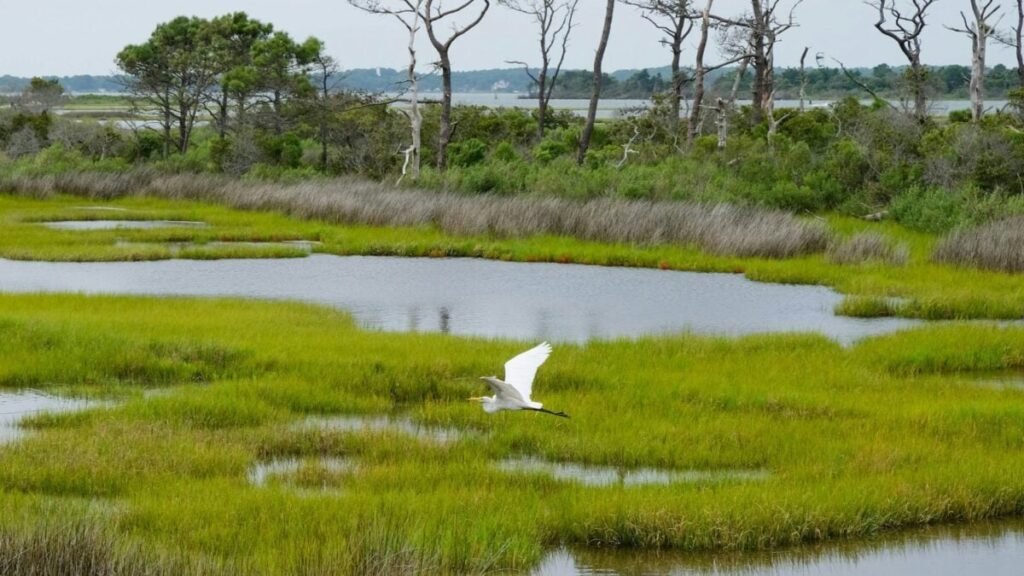A historical EU law aims to protect wetlands and tackle the climate crisis.

For centuries, European agriculture drained swamps and marshes to gain arable land. This practice transformed the continent’s geography but also released millions of tons of carbon that were stored in the wet soils. Now, the European Union aims to reverse this damage with pioneering legislation: the Renaturalization Law, which sets a strict schedule to restore part of these ecosystems by 2050.
## A law to bring life back to wetlands
The goal is ambitious: by the end of this decade, 30% of drained marshes should be in the process of restoration, with at least a quarter rehydrated. By 2050, half of the damaged wetlands should be “healthy” again, with a third restored thanks to reintroducing water.
The key is to understand that wetlands are true carbon sinks. Although they only cover 3% of the planet’s land surface, they retain twice as much carbon as all the world’s forests combined. When drained, they become powerful CO2 emitters, fueling the climate crisis.
## Denmark as a climate laboratory
North of Copenhagen, an emblematic project is taking place: Søborg Sø, a 600-hectare area that remained drained for over 200 years. Today, the Danish government is working to restore the water. Morton Elling, from the Danish Nature Agency, explains that the plan will reduce CO2 emissions by 8,000 tons annually. They are filling drainage ditches and allowing ponds to form, which are already attracting birds and amphibians.
The challenge is not only technical but also social. Convincing 63 landowners was not an easy task. “It has to be voluntary because if they are forced, many farmers will say no,” admits Sally Schlichting, a horse breeder who agreed to sell part of her land.
The European law provides for economic compensation and alternative lands but emphasizes that the goals are mandatory: states must implement them before 2032 and present restoration plans by 2027.
## The “superheroes” of nature
At the European Environment Agency in Copenhagen, specialist Yurena Lorenzo points out that Europe has lost 80% of its wetlands in the last millennium, and half of the remaining marshes are damaged. Drainage makes Europe the world’s second-largest emitter of greenhouse gases from these areas, behind only Indonesia.
“If we remove the water, we release carbon accumulated over millennia,” she warns. That’s why she argues that wetland restoration is one of the most effective strategies against climate change. Additionally, their ecological value is immeasurable: they host 40% of the planet’s plant and animal biodiversity.
Lorenzo sums it up clearly: “In my opinion, wetlands and marshes are nature’s superheroes.”
## A binding schedule to save ecosystems
The main innovation of the EU Restoration Law is that it is not just recommendations but legally binding objectives, with deadlines and percentages that countries must meet. Europe has never approved such an ambitious rule on biodiversity before.
The challenge will be to coordinate farmers, authorities, and scientists to ensure that these ecosystems return to what they once were: water reserves, wildlife refuges, and true carbon guardians. If states comply, European wetlands could become a key piece in the global fight against climate change.
[Source: ]







